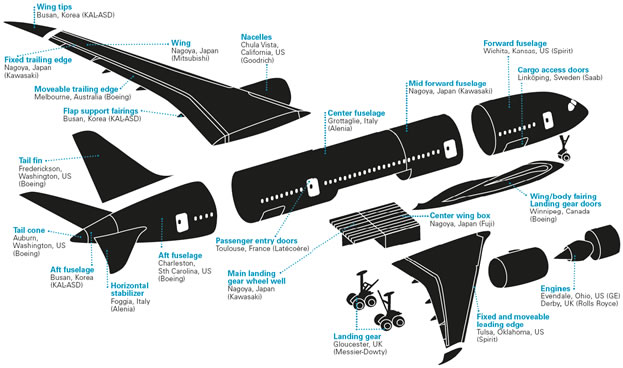The Boeing 787 Dreamliner is assembled in the United States from components built around the world. The centre fuselage is from Italy, the mid-forward fuselage is from Japan, the Rolls Royce engines are from the UK and a vital wing component - the moveable trailing edge - is designed and produced in Melbourne at Boeing Aerostructures Australia. Bringing all these parts together to build a Dreamliner is an example of a global value chain (GVC) in action.
A 'value chain' is the full range of activities involved in designing, producing and delivering a good or service. The nature of trade is changing, with value chains becoming 'global' and crossing more borders than ever. The Organisation for Economic Co-operation and Development (OECD) estimates that more than half of the value of world exports is attributable to trade within GVCs.
Value chains have become 'global' for a number of reasons, including:
- increasing information and communication technology capabilities;
- changing production costs (e.g. Asia's manufacturing cost advantage);
- lower trade and transport costs and improved international logistics;
- fewer barriers to trade (e.g. tariff and quota reduction).
The importance of GVCs in Trade Today
The growing importance of GVCs has further increased the incentive for countries to cut barriers to trade. Many industries now source inputs to production from every corner of the globe as part of GVCs. This means that tariffs and import restrictions decrease the competitiveness of a country's local industries, as they make imported inputs more expensive.
Active involvement in GVCs brings great benefits to Australia, as seen in the example of the Boeing 787 Dreamliner. This is Australia's largest aerospace contract to date, worth approximately $4bn over 20 years.
Partners Across the globe are bringing the 787 together
(Clck the image to enlarge)

